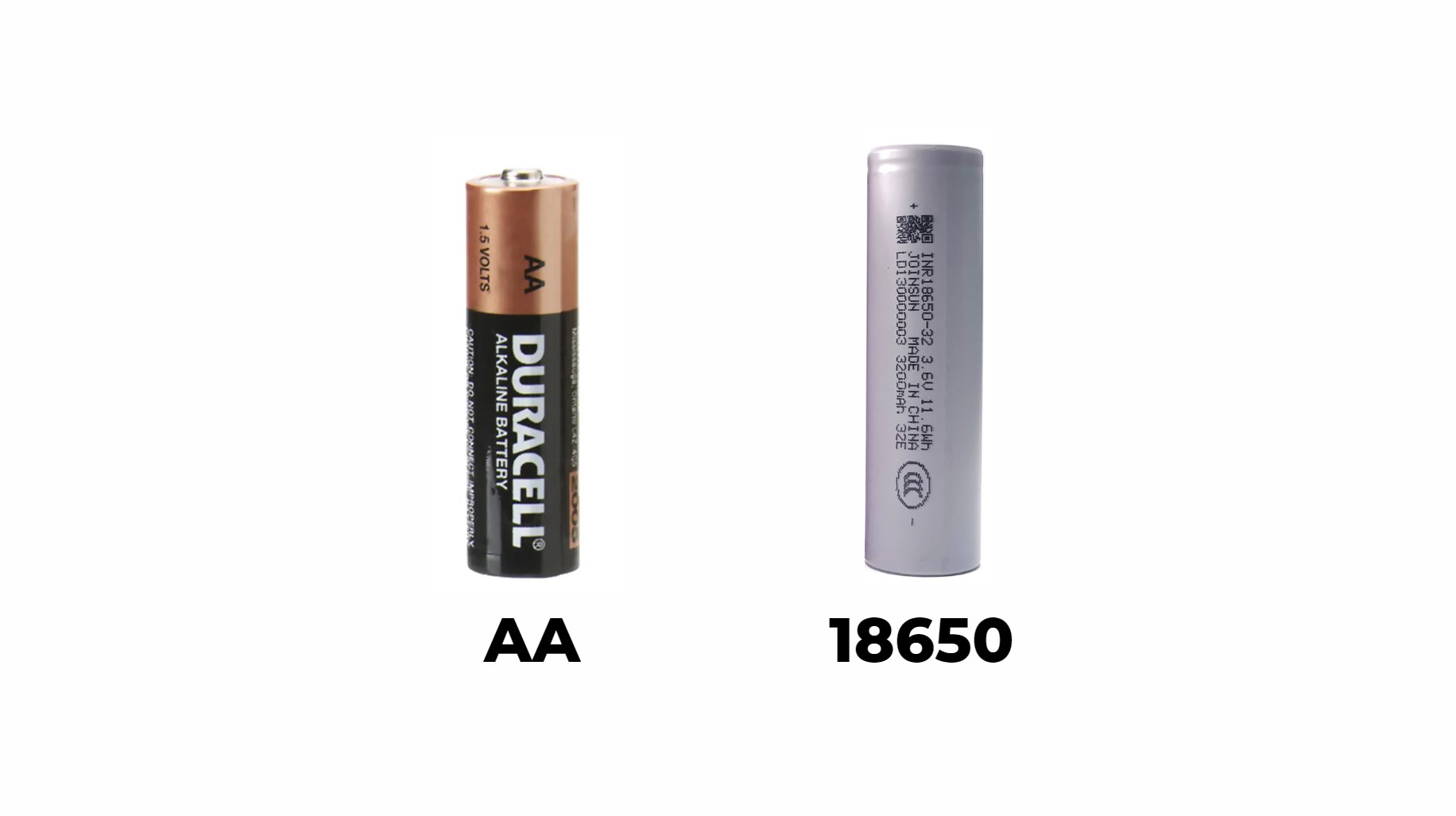When considering whether to use AA batteries instead of 18650 batteries, it’s essential to recognize their differences in size, voltage, capacity, and application. While AA batteries are widely available and suitable for many devices, 18650 batteries offer higher energy density and are rechargeable. Understanding these distinctions will help you make an informed choice.
How do the sizes of AA and 18650 batteries compare?
The physical dimensions of AA and 18650 batteries are significantly different. An 18650 battery measures 18mm in diameter and 65mm in length, while a standard AA battery is approximately 14.5mm in diameter and 50.5mm in length. This size difference means that the 18650 battery cannot fit into devices designed for AA batteries without an adapter.
| Battery Type | Diameter | Length |
|---|---|---|
| 18650 | 18 mm | 65 mm |
| AA | 14.5 mm | 50.5 mm |
The larger size of the 18650 battery allows it to hold more energy, making it suitable for high-drain applications.
What are the voltage differences between AA and 18650 batteries?
Voltage is another critical factor when comparing these two battery types. The nominal voltage of an 18650 battery is approximately 3.7 volts, while a standard AA battery has a nominal voltage of 1.5 volts (for alkaline) or 1.2 volts (for rechargeable NiMH). This difference means that using an AA battery in a device designed for an 18650 battery may not provide sufficient power.
| Battery Type | Nominal Voltage |
|---|---|
| 18650 | 3.7 V |
| AA | 1.5 V (alkaline) / 1.2 V (NiMH) |
To achieve the same voltage as one 18650 battery, you would need to connect multiple AA batteries in series.
How does the capacity of AA and 18650 batteries compare?
Capacity refers to the amount of energy a battery can store, typically measured in milliampere-hours (mAh). The capacity of 18650 batteries ranges from about 1800mAh to 3500mAh, while standard alkaline AA batteries generally have a capacity between 600mAh to 2700mAh, depending on the type (alkaline or rechargeable). This means that 18650 batteries can provide power for a longer duration compared to AA batteries.
| Battery Type | Capacity Range |
|---|---|
| 18650 | 1800mAh – 3500mAh |
| AA | 600mAh – 2700mAh |
The higher capacity of the 18650 battery makes it ideal for devices that require sustained power over extended periods.
Can I use AA batteries in devices designed for 18650 batteries?
No, you cannot use AA batteries in devices designed for 18650 batteries due to differences in size, voltage, and capacity. Devices requiring 18650 batteries are engineered to handle higher voltages and capacities, so using AA batteries may lead to insufficient power or damage.
What are the applications best suited for each type of battery?
AA batteries are commonly used in low-drain devices such as remote controls, toys, and flashlights. In contrast, 18650 batteries are ideal for high-drain applications like laptops, electric vehicles, power tools, and high-performance flashlights due to their higher energy density and rechargeability.
The choice between using AA or 18650 batteries largely depends on the device’s power requirements:
- Devices suitable for AA batteries:
- Remote controls
- Flashlights
- Toys
- Devices suitable for 18650 batteries:
- Laptops
- Electric vehicles
- High-performance flashlights
Understanding your device’s specific power needs will guide you in selecting the appropriate battery type.
Expert Opinions
“While both AA and 18650 batteries serve essential roles in powering devices, they cater to different needs,” says Dr. Alex Johnson, a battery technology expert. “For high-drain applications requiring longevity and consistent power output, the 18650 battery is superior. However, for everyday low-drain devices, standard AA batteries remain a practical choice.”
Comprehensive Test of New Rechargeable Lithium AA Batteries vs Eneloop, Single-Use Lithium, 9V, and 18650 Cells
Redway Battery: Your Lithium-Ion Solution
At Redway Battery, we specialize in lithium LiFePO4 batteries, offering a range of options including 18650, 21700, and 14500 lithium batteries. With extensive experience in providing custom battery solutions, we cater to B2B and OEM clients globally. Whether you need batteries for golf carts, high-performance devices, or portable electronics, we deliver tailored solutions quickly and efficiently.
For a quick quote or more information on our custom battery solutions, please contact us today. Trust Redway Battery for reliable, high-quality batteries that meet your specific needs and ensure optimal performance for your devices.
Conclusion
In conclusion, while both AA and 18650 batteries are widely used, they are not interchangeable due to significant differences in size, voltage, capacity, and application suitability. The choice between them should be based on your specific device requirements and usage patterns to ensure optimal performance and safety.
FAQ
- Can I replace an 18650 battery with multiple AA batteries?
Yes, you can use multiple AA batteries with an adapter to match the voltage of an 18650 battery, but performance may vary. - What is the main advantage of using an 18650 battery?
The primary advantage is its higher energy density and rechargeability, making it ideal for high-drain applications. - Are all AA batteries rechargeable?
No, not all AA batteries are rechargeable; alkaline AA batteries are typically single-use, while NiMH or lithium-ion AA batteries can be recharged. - What happens if I use an AA battery in a device designed for an 18650?
Using an AA battery may not provide enough power or could damage the device due to incompatible voltage levels. - Which type of battery lasts longer?
Generally, an 18650 battery lasts longer than an AA battery due to its higher capacity and energy density.






